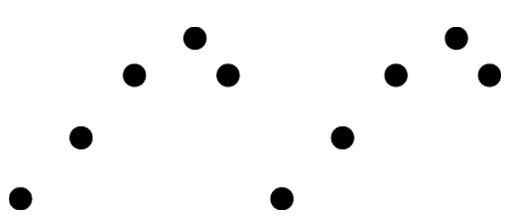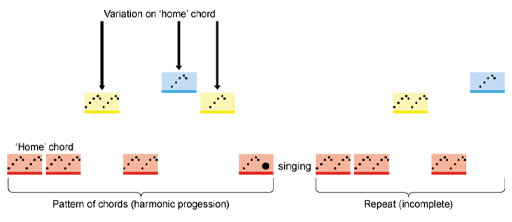1.4.2 Reflecting on large-scale musical structure
Repetition, variation and contrast are also used to organise musical material at a large scale (across an entire section of music, or the whole musical work). These musical devices might be used to organise a number of elements, such as melody, harmony or rhythm. For example, repetition might be used to organise musical content by enabling the listener to recognise particular melodies, rhythms or chord progressions. Such repetitions of melody, rhythm and harmony, create a sense of unity, balance and order, and are important in helping the listener to navigate their way through the musical content and derive meaning from what might otherwise be regarded as random clusters of sound. Variation and contrast can add interest to the music, and keep the listener engaged.
In the extracts from Beethoven’s Fifth Symphony you heard both repetition and variation of a motif as a unifying device across a large scale work, presented alongside contrasting musical material.
In examining the 12-bars blues form, you saw how repeating patterns of chords formed a harmonic progression around which the song was constructed. In Little Richard’s Good Golly Miss Molly you also noted how smaller patterns of five notes were both repeated (shown in Figure 8) and varied by starting on different pitches, and how frequently exact repeats were heard ( Figure 8).
Little Richard’s Good Golly Miss Molly uses the harmonic progression shown in Figure 9 throughout the song, aside from a short contrasting section of musical material which you will examine in further detail now.
Activity 5
Listen to Audio 35 which opens with the contrasting material described above. Consider what characterises the harmonic accompaniment in this contrasting section of music, and think about how it differs from the opening (Audio 29, also reproduced below).
Discussion
The opening of Audio 35 (the contrasting material in Good Golly Miss Molly) is notable in a number of ways. Firstly, the five note pattern represented in Figure 8 is no longer sounded. This is replaced by three detached chords which are sounded at a slow pace resulting in a period of silence in the accompaniment in between these chords. These chords are also notable since they are static; they remain at the pitch of the ‘home’ chord. Although there are three chords, there is a notable silence where the fourth chord might be expected to be heard (if following the pace of the previous chords). This has the same function as the dot pictured in Figure 8, and acts as an important junction before the start of the harmonic progression we are familiar with. These features all mark out a moment of contrast in the music, which together with repetition and variation, enable Little Richard to create unity across his song, but also create moments of interest through contrast before returning to familiar musical material.


